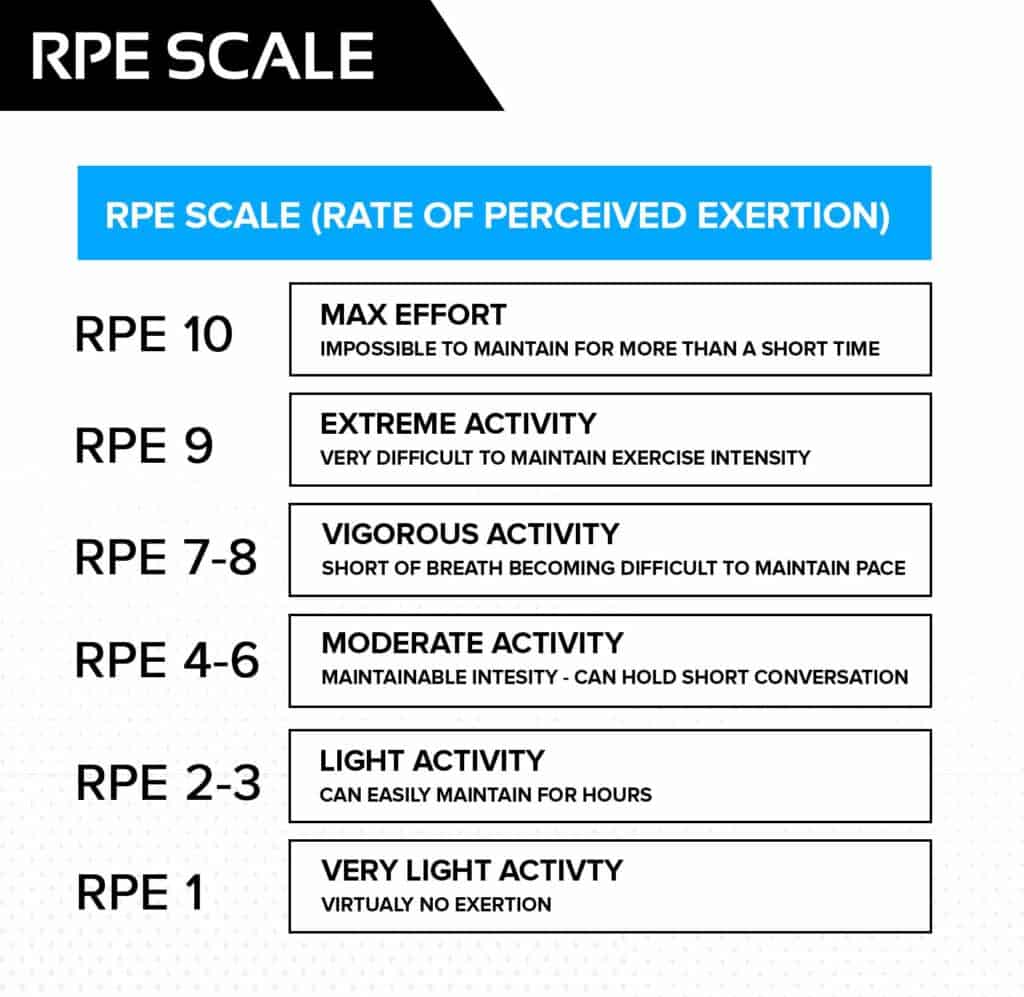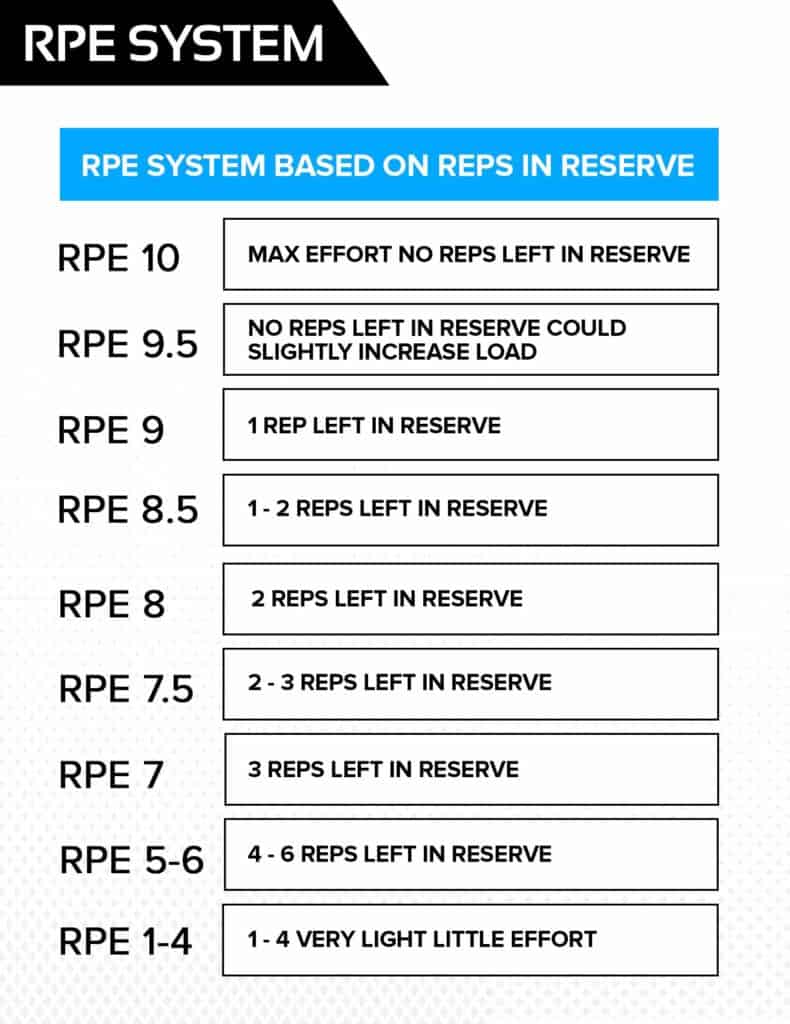MEMBERS AREA
RPE - (Rate Of Perceived Exertion)
Introduction to training intensity:
To put it very simply, muscle growth happens when there is a certain level of stress placed on the muscle. For instance, in the bench press, stress is placed on the pectoral muscles causing them to grow over time with recovery.
Trying to train until failure (not able to perform any more reps) every single session or for every single set could actually be hurting your chances of growing and strengthening your muscles.
To achieve optimum results for muscle growth, you will need to train somewhat close to failure, but what does close to failure mean and how can you measure it?
This is where a system called RPE (Rate of Perceived Exertion) can be very useful to track and measure your exertion levels in the gym.

RPE:
The RPE system is a scale from 1 to 10 which defines how much effort you are putting into your exercise.
The RPE system has been shown to be very beneficial for longevity in the gym.
Many people will say something like “you should be training hard and to failure, every single session at the gym” However, this is not a very smart approach to fitness as it will interfere with your recovery and growth. If you do this, you will most likely experience a lot of DOMS and will be too sore to train for days or even weeks if you train too hard – killing any good training opportunity that you could have done in this time period.
Furthermore, if you train whilst your body is still recovering, you can actually be damaging your muscles, stopping them from recovering and lose muscle strength and size.
RPE Based on Reps on Reserve (RIR)
Another way of determining your RPE is based on how many reps you feel like you could perform after your set is finished.
For most of your exercises, you will be performing 7 – 8 RPE meaning that you will complete your set with 2 -3 reps left in the tank. Other times, when you attempt a new PR or a one-rep max, you will be performing in the range of 9 -10 RPE which is maximum effort and no reps left in the tank afterwards.
Performing at a higher RPE (9+) is not something that you should do often. You should only be performing at a higher RPE level when you are attempting a PR or just every now and again if you feel like you want to for fun.

How to Implement RPE:
Adjusting your weight based on RPE:
When you are doing a set at a certain rep range, you want the weight you are lifting to revolve around your RPE. For example, if you feel that after you have finished your 8 reps, you trained at around 4-6 RPE, then you should add some more weight to get your desired RPE. On the contrary, if you feel like you were too tired at the end of your reps and used too much energy, you should lower the weight to match your desired RPE. This is a much more efficient way of training to avoid over-training and help with recovery.
Example:
You are doing bench press for 3 sets of 8 reps and the program says that you should be training at an 8 RPE.
This means that when you have finished your 8 reps, you should be short of breath and would find it difficult to maintain this exercise for a long period of time. You also should be able to do another 2 reps afterwards.
Scenario 1 – You have done your first set, it felt quite easy and you think that you could actually do another 4 reps afterwards if you wanted to:
This means that you should increase the weight a little bit until you feel like you are able to perform another 2 reps when you finish your set.
Scenario 2 – You have done a set of bench press and either couldn’t complete the 8 reps or you feel like you could not have done any other reps at the end of that set:
You should lower the weight that you are lifting in order to reach your desired RPE
Scenario 3 – You have finished performing 8 reps and feel that you could have done another 2 reps if you wanted to:
Well done! You have found the correct weight that you should be lifting for your RPE.
Adjusting your weight over time:
Eventually, as you get stronger in the gym, you may notice that you are using the same weight as before but you think that the exercise is getting easier and that the number of reps that you could do after the set is getting higher.
Great! This means that you are seeing some progress. At this point, it is important that you increase the weight so that you are able to keep up with the RPE.
This is a process called ‘progressive overload’, meaning that you should always be looking to increase your performance and strength at the gym and not just sticking to the same weight all the time. Progressive overload is very important for muscle strength and growth.
It is, however, important to note that as you get older or if you are going through a period of weight loss, it is extremely natural to experience a loss in strength. If you experience this, adjust your weight to match your desired RPE.
This is just part of fitness. Unfortunately, you cannot expect to consistently gain strength and muscle throughout your whole life of fitness.
